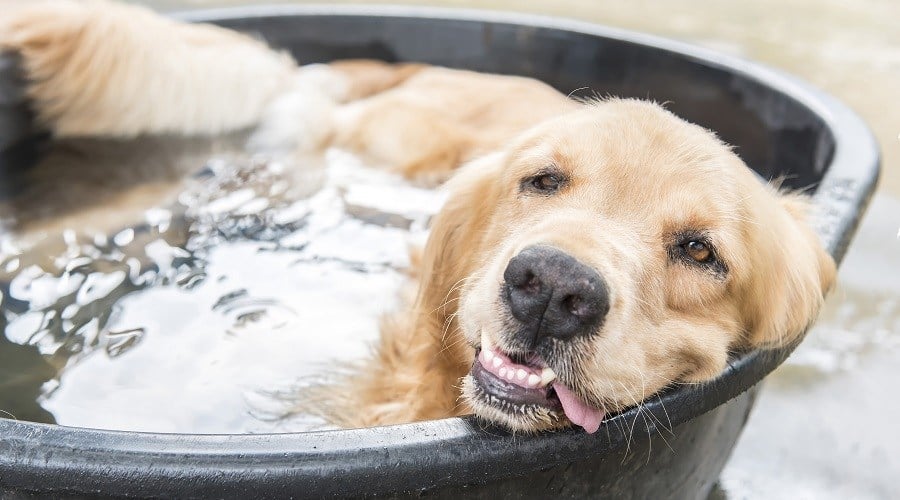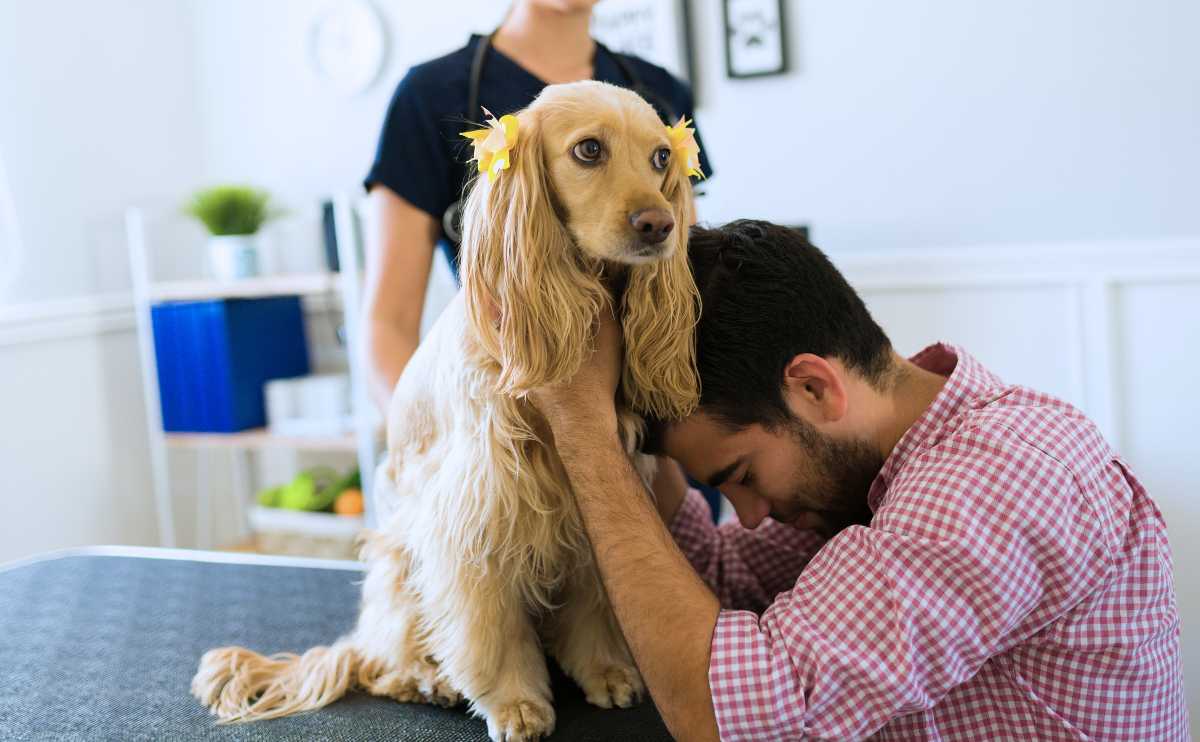Butt Ballet: Why Your Dog Is Pirouetting Across The Carpet (and How To Stop The Scooting)
When you purchase through links on our site, we may earn a commission. Here’s how it works.
Ever caught your dog pirouetting their butt across the carpet? Funny as it looks, this “butt ballet” is usually a sign that something’s bothering them back there. Let’s find out why dogs scoot, and how to make the show stop.
Table of Contents
What Is Scooting?
Scooting is the canine equivalent of attempting to scratch an itch you can’t reach, except your dog’s “back scratch” involves dragging their butt across your floor. Textured surfaces like rugs or grass act like nature’s itch relief, which is why your pup prefers them over, say, your tile floor.
An occasional scoot isn’t usually a big deal. But if your dog is doing repeat performances for more than a day or two, it’s time to call the vet.
Scooting Myths & Misconceptions
Not everything you’ve heard about dog scooting is true. Let’s clear up a few of the most common myths before they spread faster than a carpet stain.

“It’s Just A Funny Habit.”
Not quite. Scooting is almost always a symptom of discomfort, and ignoring it can lead to bigger problems like infections or abscesses.
The sooner you figure out what’s wrong, the better your dog will feel (and the cleaner your floors will be).
“Only Small Dogs Get Anal Gland Issues.”
False. While toy breeds are more prone to them, large breeds aren’t immune.
Any dog with soft stools, allergies, or specific body structures can develop problems.
“If I See Worms, I Can Just Treat Them At Home.”
Not so fast. Some intestinal parasites need specific prescription treatments.
A fecal exam at the vet ensures you’re targeting the right worm and thoroughly eliminating them.
The Usual Suspects: 4 Big Reasons Dogs Scoot
Dogs don’t drag their butts around for fun (well… not just for fun). Scooting is usually your pup’s way of scratching an itch, easing irritation, or dealing with pain in the back end.
Here are the most common culprits.
1. Anal Gland Issues
Dogs have two small sacs just inside their butt called anal glands. These produce a pungent brown liquid that usually empties when your dog poops, helping them leave behind a scent message for other dogs.
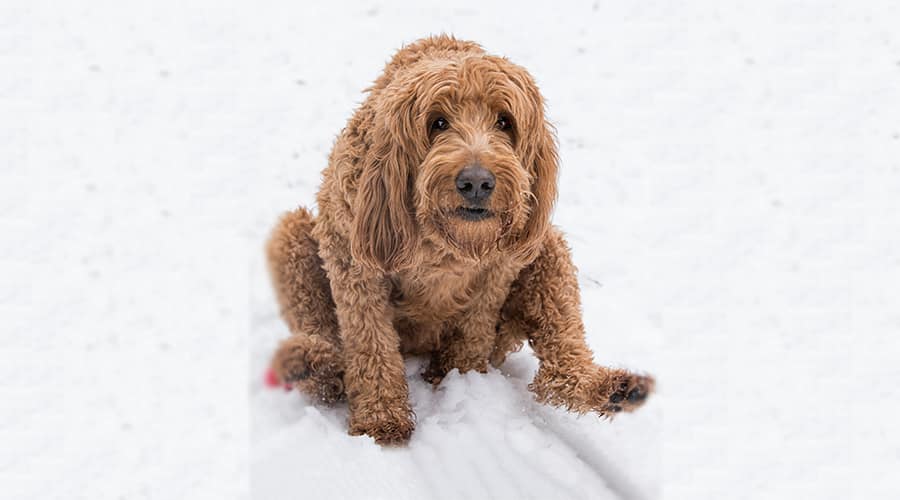
When the glands don’t empty properly (thanks to constipation, soft stools, allergies, or no clear reason at all), they can get overfilled, swollen, and uncomfortable. Scooting is your dog’s DIY attempt at relief.
If left untreated, blocked anal glands can become infected or form a painful abscess that may burst. Other telltale signs include swelling, a fishy smell, excessive licking, or your dog guarding their backside.
2. Itchy Skin
Skin irritation around the rear end can make scooting irresistible.
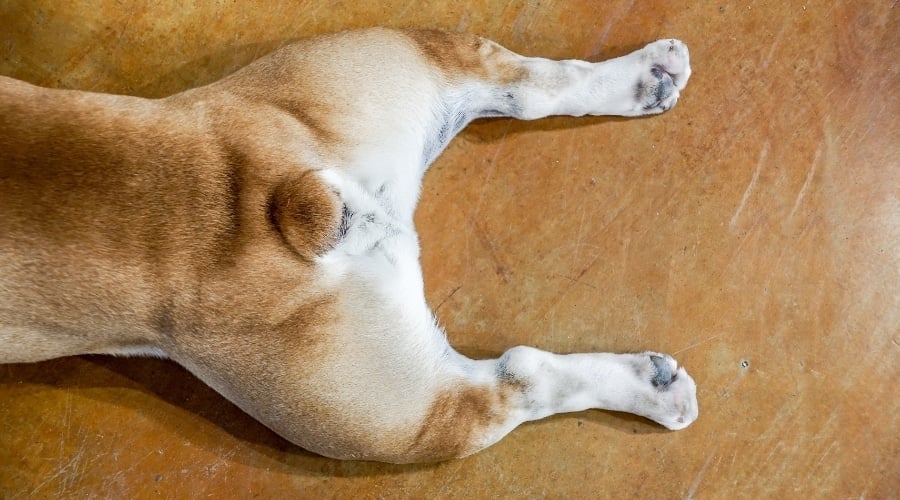
Common triggers include:
- Allergies (flea bites, food sensitivities, environmental allergens)
- Clipper rash after grooming
- Dirty or sore skin after diarrhea
Constant rubbing or licking can turn a mild itch into raw, inflamed skin that may need treatment.
3. Wormy Woes
Tapeworms are infamous for causing an itchy butt. Their rice-like segments may be visible near your dog’s bottom or in their poop.
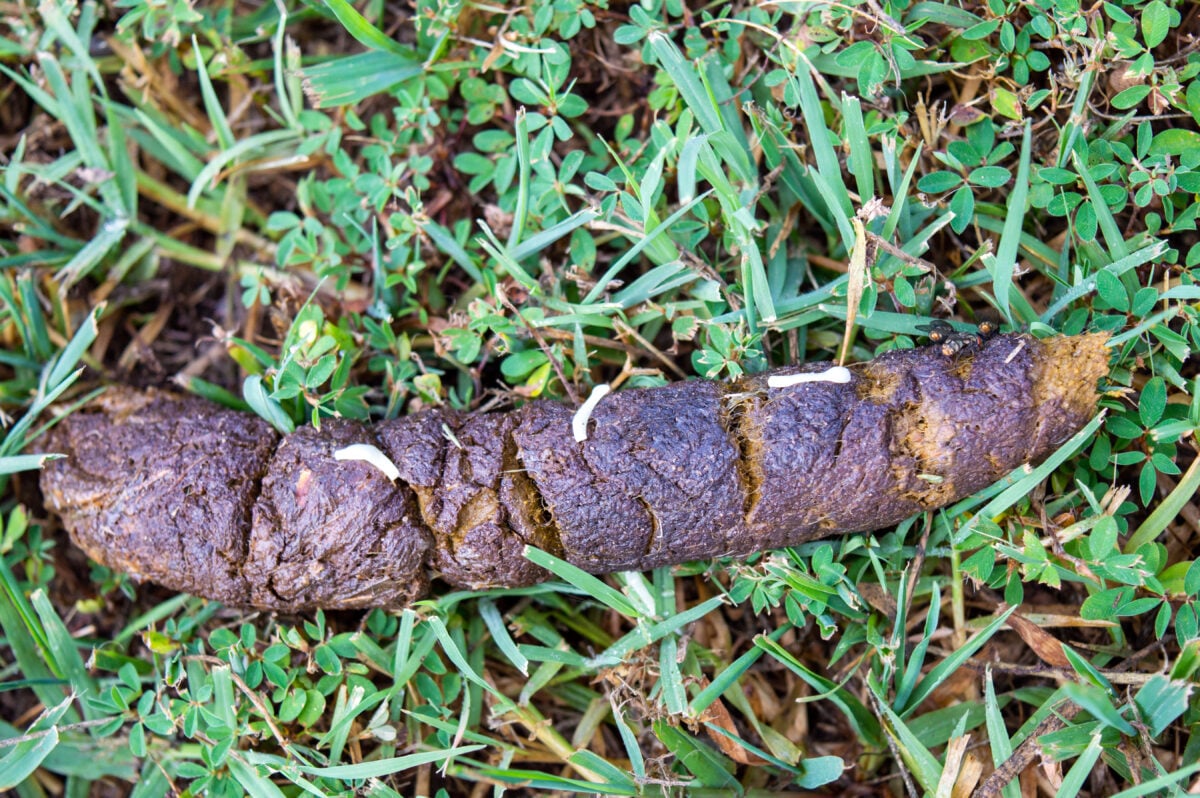
Other intestinal worms—roundworm, hookworm, and whipworm—can also be trouble.
Regular deworming helps keep parasites away, protecting not just your dog but also your human family (some worms can spread to people).
4. The Ouch Factor
Pain in the back end can also trigger scooting.
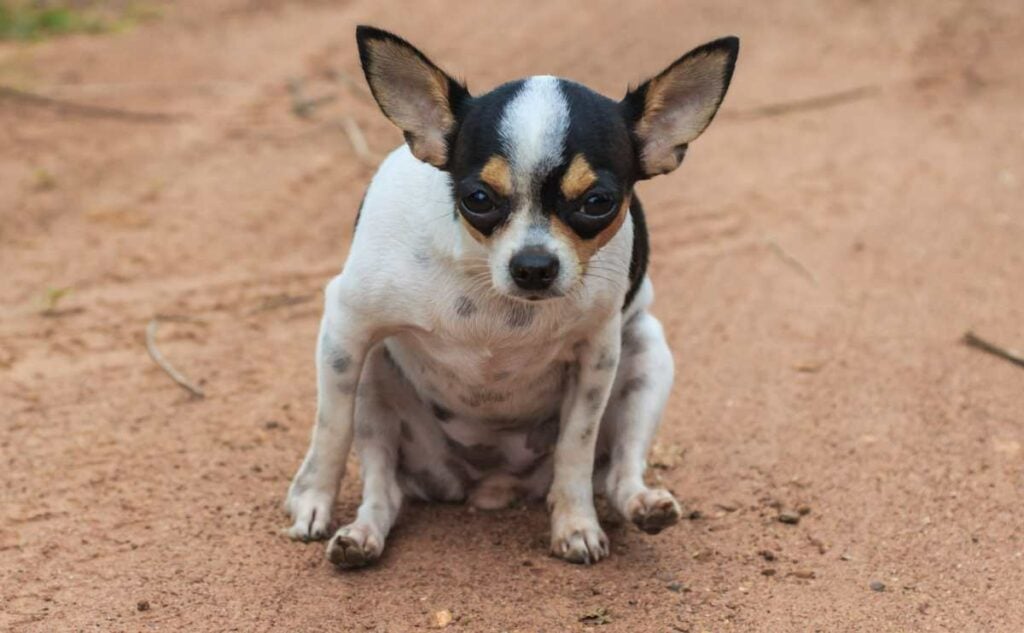
Possible causes include:
- Lumps or growths (e.g., cysts, tumors)
- Recent surgery in the area
- Anal gland abscess
- Perineal hernia
- Matted fur pulling on skin
- Urine scald or dermatitis from incontinence
A dog in pain may yelp, snap, or shy away when touched. If you suspect discomfort, get them checked by your vet promptly.
Scooting Symptoms Decoder
Not sure which culprit is behind your dog’s rear-end shuffle? This chart can help you connect the dots, and decide when it’s time for the vet.
| Symptom | Possible Cause | Next Step |
|---|---|---|
| Scooting + fishy odor | Anal gland impaction or infection | Vet visit for gland check and expression |
| Scooting + rice-like specks near butt or in poop | Tapeworms | Vet fecal exam + prescription dewormer |
| Scooting + red, irritated skin | Allergies, fleas, or skin infection | Vet check, flea prevention, allergy management |
| Scooting + swelling or bleeding | Anal gland abscess, growth, or injury | Immediate vet visit |
| Scooting + matted fur | Grooming-related irritation or debris stuck to fur | Trim, clean, and monitor for skin issues |
Scooting In Puppies vs Adults
Age can influence what’s behind the butt ballet.
- Puppies: Parasites are the most common culprit. Worm infestations are easier to get and harder to shake without proper treatment. Follow a puppy deworming schedule to keep them parasite-free.
- Adults: Anal gland impactions and allergies take the lead. Diet, grooming, and preventative vet care make a big difference here.
Knowing the most likely cause by age can help you and your vet skip straight to the right tests and treatments.
What Happens If You Ignore Scooting
Pretending scooting will “just go away” is a gamble you don’t want to take. Here’s how a minor itch can turn into a major headache:
- Mild irritation – Your dog scoots occasionally, trying to relieve the itch.
- Blocked anal glands – Soft stools or inflammation prevent natural emptying.
- Infection – Bacteria move in, causing swelling, redness, and pain.
- Abscess – The infected gland fills with pus, which can rupture (messy and painful).
- Surgery – Severe or recurring cases may require anal gland removal or treatment for a hernia or tumor.
Catching scooting early often means a quick, inexpensive fix. Waiting can mean antibiotics, sedation, or even surgery.
Help! My Dog’s Scooting — Here’s Your 3-Step Plan
If your dog’s turning your carpet into a rear-end runway, don’t panic. Here’s how to handle it without losing your sense of humor (or your security deposit).
1. Take A Quick Peek
Check your dog’s back end for obvious problems: swelling, redness, visible worms, matted fur, or anything stuck where it shouldn’t be. If you spot blood, pus, or a burst abscess, skip straight to the vet.
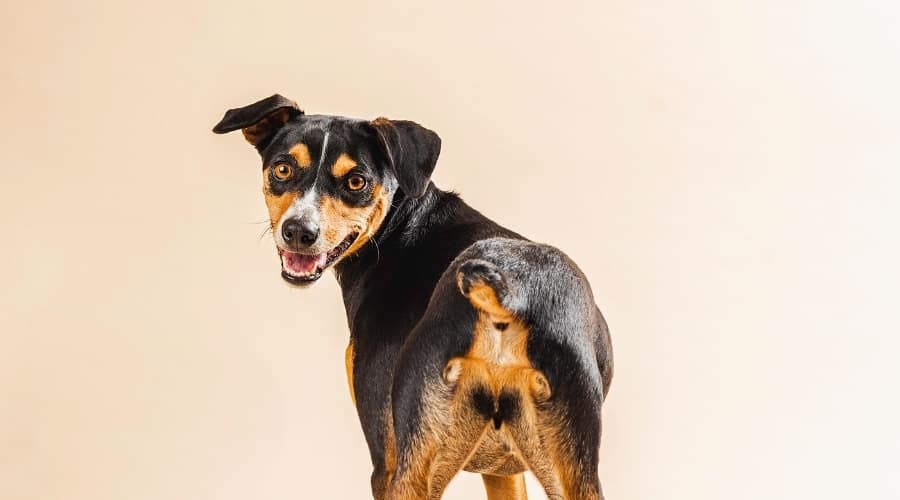
2. Call The Professionals
Even if things look “mostly fine,” persistent scooting for more than a day or two needs a vet visit. They can check for anal gland issues, parasites, skin infections, or anything else causing the itch.
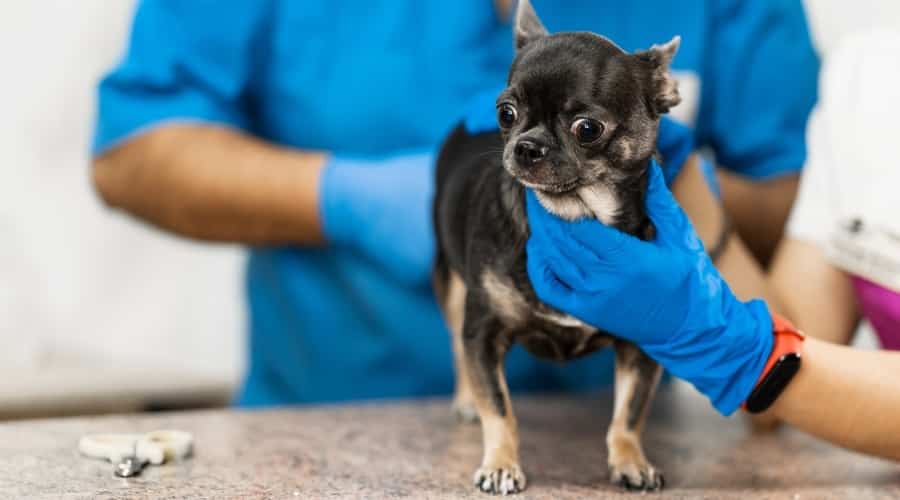
3. Follow The Plan
Whether it’s a dewormer, anal gland expression, allergy meds, or diet tweaks, follow your vet’s instructions to the letter. Skipping treatment means the scooting show will be back for an encore.
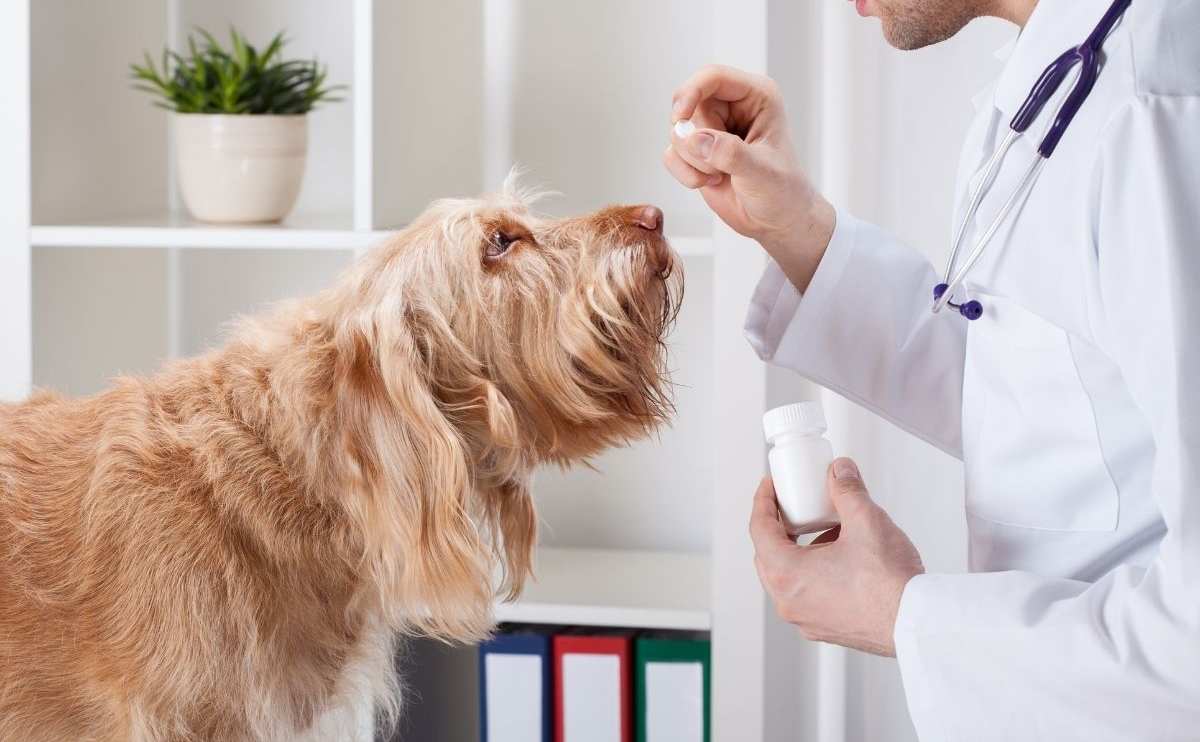
Breed & Lifestyle Risk Factors
Some dogs are simply more likely to scoot because of their build, habits, or diet.
- Body shape: Short-backed, broad dogs (like Bulldogs and Pugs) are more prone to anal gland issues because of how they sit and walk.
- Diet: Low-fiber diets can lead to softer stools, which don’t put enough pressure on anal glands to empty them naturally.
- Activity level: Sedentary dogs may have weaker bowel movements and slower digestion, increasing the risk of impaction.
- Coat type: Long-haired dogs can develop mats or debris near the anus, leading to scooting as a quick fix for discomfort.
If your dog ticks multiple boxes, keeping up with grooming, diet, and vet checks can help keep scooting at bay.
Seasonal Scooting
Believe it or not, the time of year can affect scooting.
Spring and summer bring more fleas, pollen, and outdoor allergens, which can trigger itchy skin around the rear. In winter, dry air can make skin more sensitive, especially in dogs prone to allergies.
Adjusting grooming and prevention routines with the seasons can help keep scooting at bay.
Treating A Scooting Dog
Once you’ve identified the likely cause of your dog’s butt woes, treatment usually falls into one of two camps: the quick fixes you can do at home, and the things best left to your vet.
At-Home Relief For Scooting Dogs
If your vet rules out anything serious, a few small changes can help calm the itch and save your carpet:
- Boost the fiber: Switching to a high-fiber dog food or adding canned pumpkin (plain, not pumpkin pie mix) can firm up stools and help naturally empty anal glands.
- Keep it clean: Use unscented pet wipes or a damp cloth to gently clean your dog’s rear end after messy poops.
- Treat fleas and allergies: Year-round flea prevention and allergy management can keep itchy skin at bay.
- Regular grooming: Keep fur around the back end trimmed to prevent matting and irritation. Check out our picks for best grooming clippers.
For additional ways to help your dog feel better at home, check out our guide to home remedies for dog scooting.
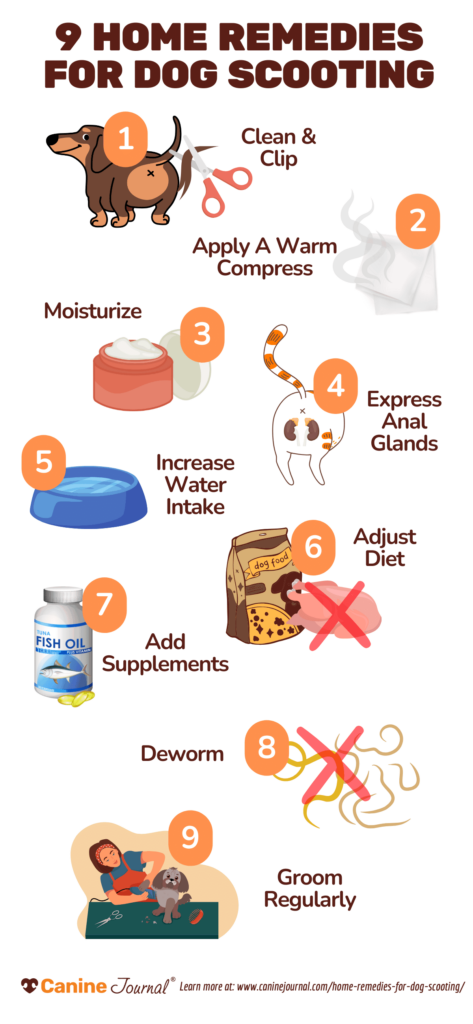
When The Vet Needs To Step In
Some scooting causes can’t be fixed with a can of pumpkin and good intentions. Call your vet if your dog has:
- Ongoing scooting for more than a couple of days
- Swelling, bleeding, or pus near the anus
- Signs of pain when sitting or pooping
- Visible worms or worm segments
- A fishy odor that just won’t quit
Your vet may need to:
- Manually express the anal glands
- Treat an infection or abscess
- Prescribe medication for allergies or parasites
- Recommend surgery for more serious conditions (like tumors or hernias)
If you’re curious about the process of anal gland expression, we have a step-by-step guide to expressing your dog’s anal glands at home, but for most pet parents, it’s a task best left to the pros.
Vet vs Groomer: Who Should Handle Anal Glands?
Some groomers offer anal gland expression, but there’s a catch: they can only perform external expression, which empties the glands from the outside. This can be helpful for mild impactions, but it doesn’t allow them to check for infections, abscesses, or tumors.
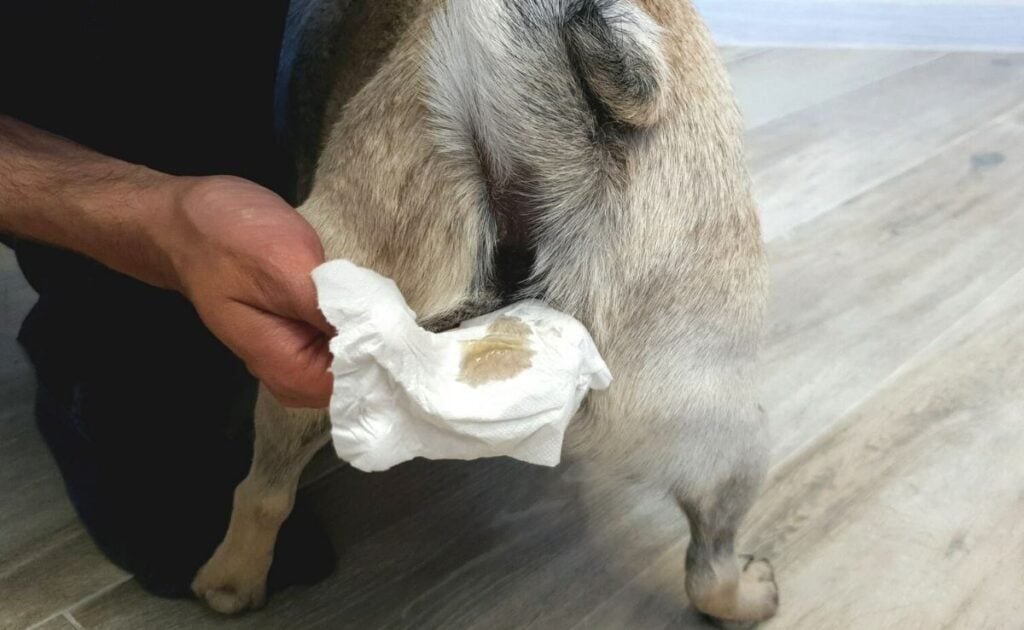
Vets, on the other hand, can do internal expression, which is more thorough. They can also diagnose underlying problems and prescribe treatment if something’s wrong.
If your dog only scoots occasionally and your vet has confirmed it’s a simple impaction, a groomer may be able to help between vet visits. But if scooting is frequent, painful, or smelly, skip straight to the vet.
Carpet-Saver Hacks
While you’re figuring out the cause, your carpet doesn’t need to be collateral damage.
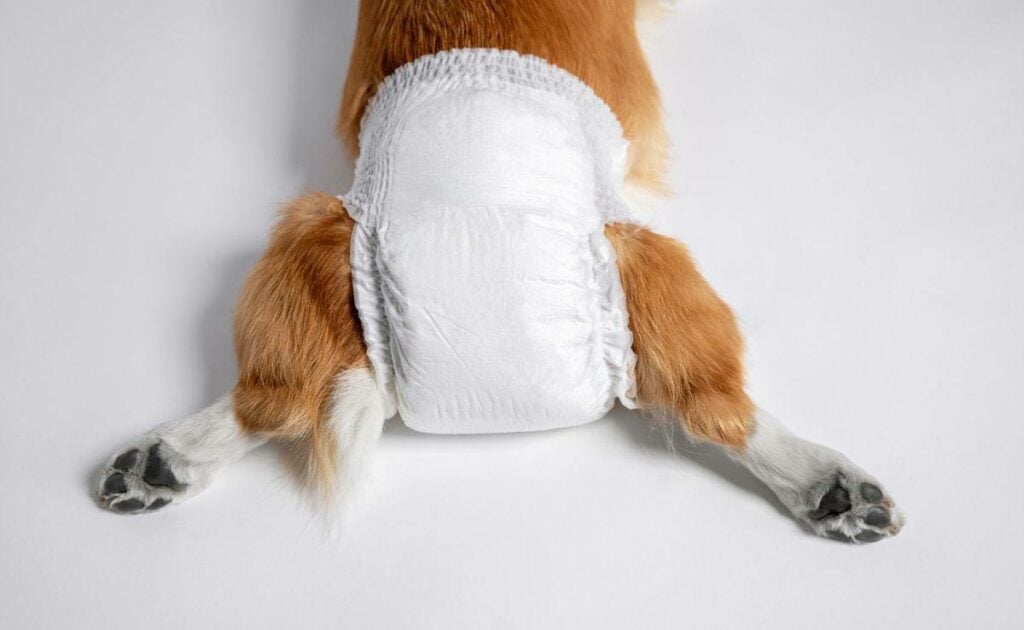
- Lay down washable rugs where your dog likes to scoot most.
- Close off carpeted rooms until the problem’s fixed.
- Spot-clean quickly with pet-safe cleaner to prevent stains and smells from setting in.
- Use doggy shorts or diapers for short-term protection if the scooting is constant.
A little preparation can save you hours of scrubbing—and maybe your security deposit.
Frequently Asked Questions
Scooting might look funny, but it is your dog’s way of saying something is not right in the back-end department. These quick answers cover the most common questions pet parents have when the butt ballet begins.
Don’t see your question? Ask us in the comments!
Why Is My Dog Scooting?
Scooting is your dog’s way of saying something is bugging their butt. The top culprit is blocked or impacted anal glands, but worms, skin allergies, dermatitis, or anything that causes irritation back there can also trigger the rear-end shuffle.
It’s important to watch for other symptoms alongside scooting, such as swelling, redness, or a strong odor. These clues can help your vet narrow down the cause more quickly and get your dog feeling better sooner.
Is Scooting Normal For Dogs?
An occasional scoot after an itch is not unusual. Sometimes, it’s just your dog’s version of a quick scratch. It might happen after a messy poop or if something minor irritates the skin.
However, if your dog is scooting multiple times a day or for more than a day or two in a row, it’s time for a vet check. Persistent scooting almost always points to an underlying issue that needs attention.
How Do You Know If A Dog Has Worms?
In some cases, you might see rice-like segments (tapeworm pieces) near your dog’s bottom or in their stool. Other common signs include weight loss, diarrhea, vomiting, excessive licking of the rear, or a bloated belly.
Even if you don’t see obvious symptoms, your dog can still have intestinal parasites. This is why routine fecal testing and regular deworming are so important for protecting your dog’s health and preventing parasites from spreading to other pets or people.
How Do You Know If A Dog Needs Its Glands Expressed?
Scooting is one of the biggest clues that your dog’s anal glands might be full or impacted. Other signs include constant licking of the area, swelling around the anus, or that unmistakable fishy smell.
Some dogs will also show signs of discomfort when sitting or may guard their back end from touch. A vet can confirm if the glands need expressing and check for infection or other problems at the same time.
Can I Express My Dog’s Glands At Home?
Yes, but only if they are not emptying naturally and only after your vet shows you how. If you want to learn, here is our step-by-step guide to expressing your dog’s anal glands at home.
What Can I Put On My Dog’s Raw Butt?
Yes, but only if your vet has confirmed it’s necessary. There’s a risk of injury or infection if it’s done incorrectly, so it’s not something to attempt without proper guidance.
Most pet parents prefer to leave it to the pros, since vets can also check for underlying issues during the process. If you do learn how to do it, always wear gloves, use plenty of lubricant, and follow your vet’s instructions exactly.
Can Dogs Scoot From Stress Or Anxiety?
Yes. Stress can sometimes cause dogs to lick or chew excessively, including around the rear, which might lead to scooting.
However, anxiety-driven scooting is rare compared to physical causes like worms or anal gland issues. Always rule out medical reasons first.
Do Certain Foods Cause Scooting?
Yes. Diets low in fiber can lead to softer stools, which make it harder for anal glands to empty naturally. Some dogs may also have food sensitivities that cause itchy skin around the anus.
Your vet may recommend a diet change or allergy testing if scooting is frequent.
Can Scooting Spread Worms To Other Pets?
Potentially, yes. If your dog’s scooting is caused by intestinal parasites like tapeworms or roundworms, the eggs can contaminate surfaces and be picked up by other pets (or even humans). This is why prompt diagnosis, treatment, and cleaning are so important.
Take Action To Keep Your Pup Comfortable
Scooting might look silly, but it’s often your dog’s way of saying something’s wrong. Learn more about anal gland issues in dogs and check out our puppy deworming schedule to help address common causes. When in doubt, call your vet to keep your pup healthy and happy.
